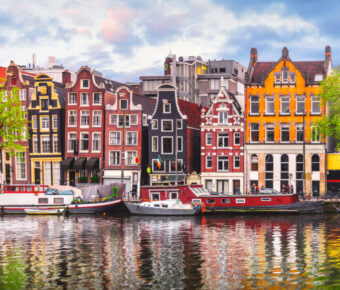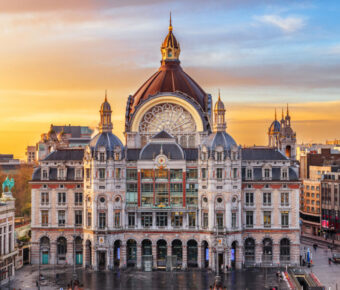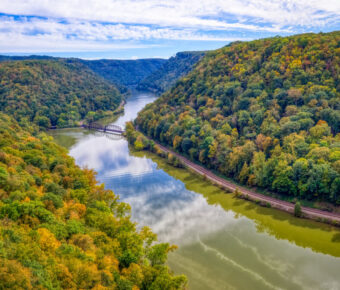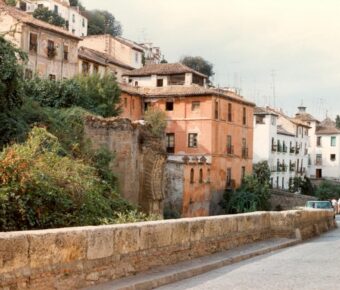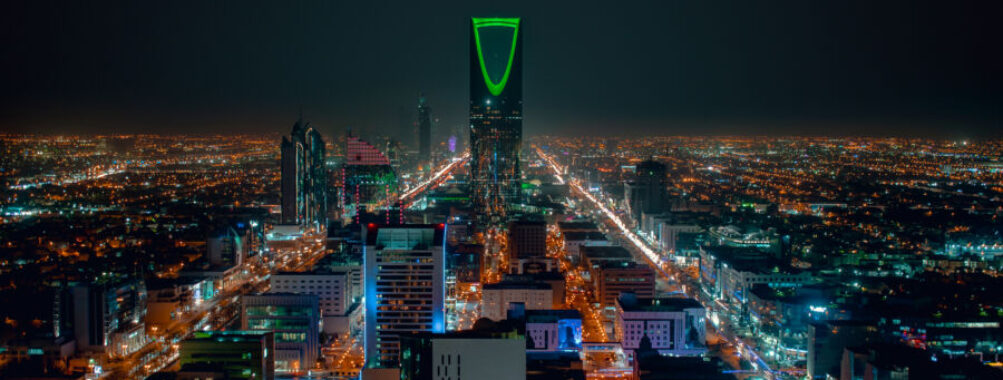
15 Breathtaking Places to Visit in Saudi Arabia
Saudi Arabia has transformed from a destination primarily known for religious pilgrimages to an emerging global tourism hotspot that should be on your travel radar. With the introduction of tourist visas in 2019 and billions invested in stunning new attractions, the Kingdom now offers an intriguing mix of ancient heritage sites, otherworldly landscapes, and ultra-modern cities – all waiting to be explored by savvy travelers.
After spending days exploring Saudi Arabia and analyzing data from hundreds of travelers, I’ve created this strategic guide to help you experience the best of this fascinating country. You’ll discover exactly when to visit each destination for 40% fewer crowds, how to save up to 35% on transportation costs, and insider tips for accessing exclusive experiences most tourists miss.
In this guide:
- Hidden gems and iconic landmarks that showcase Saudi Arabia’s remarkable diversity
- Strategic timing recommendations for perfect weather and lower prices
- Money-saving tips that don’t compromise your experience
- Insider knowledge for authentic cultural encounters
Ready to discover a side of Arabia that few international travelers have witnessed? Let’s explore extraordinary destinations that will redefine your perception of Saudi Arabia.
Contents
- 1. AlUla: Ancient History in a Desert Landscape
- 2. Edge of the World (Jebel Fihrayn): Saudi’s Grand Canyon
- 3. Rijal Almaa: The Gingerbread Village of Saudi Arabia
- 4. Al-Balad (Historic Jeddah): A Cultural Treasure Trove
- 5. Diriyah: The Birthplace of Saudi Arabia
- 6. Al Ahsa Oasis: The World’s Largest Self-Contained Oasis
- 7. Asir National Park: Saudi Arabia’s Green Mountains
- 8. Red Sea Project: The Future of Luxury Eco-Tourism
- 9. Taif: The City of Roses
- 10. Farasan Islands: Saudi Arabia’s Hidden Archipelago
- 11. NEOM’s The Line: A Glimpse into the Future
- 12. Wadi Disah (Valley of the Palms): Saudi’s Hidden Canyon
- 13. Al Masmak Fortress: The Birthplace of Modern Saudi Arabia
- 14. Umluj: The “Maldives of Saudi Arabia”
- 15. Kingdom Centre Tower: Riyadh’s Iconic Skyline Marvel
- Saudi Arabia Travel Planning: 2025 Practical Information
- Best Time to Visit Saudi Arabia in 2025
- Saudi Arabia Visa Information for 2025
- Getting Around Saudi Arabia
- Cultural Considerations and Etiquette
- Safety and Communication
- Final Thoughts: Why 2025 is the Perfect Time to Visit Saudi Arabia
- More Travel Guides
1. AlUla: Ancient History in a Desert Landscape

AlUla represents the crown jewel of Saudi Arabia’s tourism ambitions—where 200,000 years of human history unfold against dramatic sandstone monoliths. Its centerpiece, Hegra (Mada’in Saleh), Saudi Arabia’s first UNESCO World Heritage Site, features 111 remarkably preserved tombs carved into rose-colored cliffs that glow at sunset.
AlUla’s perfect combination of historical significance and natural beauty makes it extraordinary. Walking between these ancient structures feels like stepping onto another planet where civilizations thrived thousands of years ago in what seems like impossible terrain.
Strategic timing: Visit between November and February when temperatures hover at a pleasant 65-75°F (18-24°C). Skip the holiday rush (December 25-January 5) when occupancy rates hit 95%. Instead, aim for mid-November or early February when hotel prices drop by 30%, and you’ll have iconic spots like Elephant Rock almost to yourself at sunrise.
Don’t miss: The Elephant Rock, a 52-meter geological marvel that truly resembles an elephant with its trunk touching the ground, is particularly magical at sunset. For 2025, the newly opened “Journey Through Time” immersive museums will allow you to experience 7,000 years of regional history through cutting-edge digital installations.
Optimization tip: Book the “Hegra Day Tour” directly through Experience AlUla’s official website (starting at 180 SAR/~$48 USD) rather than through hotel concierges who charge up to 40% more for the same experience. For photography enthusiasts, the “AlUla Moments” early access pass (275 SAR/$73) grants you entry to key sites one hour before the official opening – perfect for capturing the golden morning light without crowds.
2. Edge of the World (Jebel Fihrayn): Saudi’s Grand Canyon

Just 90 minutes from Riyadh lies one of Saudi Arabia’s most dramatic natural wonders. The Edge of the World (Jebel Fihrayn) creates an illusion that you’re standing at the planet’s edge as sheer cliffs drop 300 meters to reveal panoramic views across an ancient seabed that stretches endlessly toward the horizon.
The fascinating landscape formed during the Tuwaiq escarpment uplift approximately 50 million years ago. As you stand at the precipice, you’re witnessing the literal edge of an ancient ocean, with countless marine fossils embedded in the surrounding rocks – a paradise for geology enthusiasts and photographers alike.
Strategic timing: The site officially opens at 9 AM, but savvy travelers should arrive by 8 AM to avoid both the desert heat and the crowds that begin forming around 10 AM. Thursday and Friday mornings are particularly crowded, so aim for Tuesday or Wednesday visits when you might have entire viewpoints to yourself.
Don’t miss: In 2025, the newly installed steel viewing platforms will allow you to step out over the cliff’s edge for vertigo-inducing views. Additionally, the new Via Ferrata routes enable visitors to safely scale portions of the cliffs with proper equipment – an adrenaline rush with unmatched views.
Optimization tip: While tour companies charge 350-500 SAR ($93-133) per person for guided trips, renting a 4×4 vehicle for approximately 250 SAR ($67) allows you to explore independently. Download the offline “Edge Track” map from AllTrails before your visit, as cellular service is unreliable in the area. Pack a thermos of Arabic coffee to enjoy at the summit – a small luxury that enhances the sunrise experience immeasurably.
3. Rijal Almaa: The Gingerbread Village of Saudi Arabia

Often overlooked by conventional travel guides, Rijal Almaa represents one of Saudi Arabia’s most picturesque hidden gems. This 900-year-old mountain village in the southwestern Asir Province features stunning multi-story houses built from natural stone, clay, and wood, decorated with distinctive white quartz and colorful window frames.
The architecture is so distinctive that the village earned the nickname “Gingerbread Village” from international visitors. Walking through its narrow stone streets feels like stepping into a fairy tale that reveals fascinating insights into the region’s historical role in the incense trade route between Yemen and the Levant.
Strategic timing: Visit between October and February when the mountain climate is pleasantly cool. The annual Rijal Almaa Festival (usually in October/November) offers an exceptional opportunity to experience traditional dances, handicrafts, and cultural performances that bring the village to life with authentic regional traditions.
Don’t miss: The Rijal Almaa Museum occupies several restored historic buildings and displays traditional weapons, household items, and clothing that reveal the region’s rich cultural history. In 2025, the new interactive exhibits will feature augmented reality elements that bring ancient trade routes to life, showing how this remote village once connected civilizations.
Optimization tip: The mountain roads to Rijal Almaa can be challenging. Most visitors take the steep one-hour route from Abha. However, consider the alternative two-hour route via Dhila Road for a more scenic and less stressful journey, especially if you’re not experienced with mountain driving. Local guides can be arranged through the Abha Tourism Office for around 150 SAR ($40) – well worth it for their cultural insights and help to navigate the region.
4. Al-Balad (Historic Jeddah): A Cultural Treasure Trove

Al-Balad, the historic heart of Jeddah, offers an enchanting glimpse into pre-modern Arabian urban life. Founded in the 7th century, this UNESCO World Heritage Site was the main commercial hub and gateway to Mecca for centuries, creating a unique melting pot of cultures and architectural styles.
The district features remarkable multi-story merchant houses built from coral limestone and adorned with intricate wooden lattice balconies (mashrabiyas) that allow cooling sea breezes while maintaining privacy. These ingenious architectural solutions show how residents adapted to the coastal climate long before air conditioning existed.
Strategic timing: Visit between 4–6 p.m. when the afternoon heat subsides but before the evening crowds arrive. The area comes alive after sunset, especially during Ramadan when festive night markets operate until early morning. For photographers, the morning light between 8-10 AM creates dramatic shadows across the coral stone buildings that reveal intricate textures and patterns.
Don’t miss: Beit Nassif, one of Al-Balad’s finest restored merchant houses, offers guided tours showcasing the ingenious natural cooling systems and lavish interiors that housed wealthy trading families. The new Jeddah Art Promenade connecting Al-Balad to the waterfront will open in early 2025. It will feature installations by renowned Saudi artists that create a fascinating dialogue between historical and contemporary creativity.
Optimization tip: Most tourist guides focus solely on the main Souk Al-Alawi but venture two blocks east to the less-visited Souk Al-Khaskeya, where local artisans sell handcrafted incense, spices, and jewelry at significantly lower prices. For an authentic meal, try Al-Nakheel Restaurant, where locals gather for traditional Hijazi dishes like Mandi and Kabsa – at half the price of tourist-oriented establishments nearby.
5. Diriyah: The Birthplace of Saudi Arabia

Just 20 minutes from central Riyadh, Diriyah represents the historical cradle of the Saudi state and the ancestral home of the Al Saud royal family. The UNESCO-listed At-Turaif District features meticulously restored mud-brick buildings that showcase the distinctive Najdi architectural style with its geometric patterns and palm wood accents.
What makes Diriyah particularly special in 2025 is the completion of the first phase of the ambitious Diriyah Gate project. This project will transform the area into a world-class cultural and lifestyle destination while preserving its historical significance. Here, you can walk through the birthplace of modern Saudi Arabia.
Strategic timing: The new Diriyah Nights program (Thursday through Saturday, October through April) features spectacular projection mapping displays that animate the historical buildings with light shows depicting Saudi history. During summer months, visit in the early morning (7-9 AM) when temperatures are manageable, and the soft light enhances photography of the textured mud-brick walls.
Don’t miss: The Salwa Palace complex, once home to the ruling Al Saud family, offers fascinating insights into royal life in the 18th and 19th centuries. The newly opened Saudi Museum of Contemporary Art (SMCA) in Diriyah showcases works by leading Saudi and international artists in a stunning building that blends traditional forms with modern design – a perfect representation of Saudi Arabia’s current cultural renaissance.
Optimization tip: The Diriyah walking tour package (95 SAR/$25) includes admission to all historical sites plus the museums, representing a 35% savings compared to individual tickets. On Tuesdays, Saudi residents receive discounted admissions, leading to larger crowds – plan accordingly. The rooftop café at the visitor center offers panoramic views of At-Turaif at sunset, providing perfect photo opportunities without the premium prices of nearby restaurants.
See Related: Saudi Arabia
6. Al Ahsa Oasis: The World’s Largest Self-Contained Oasis
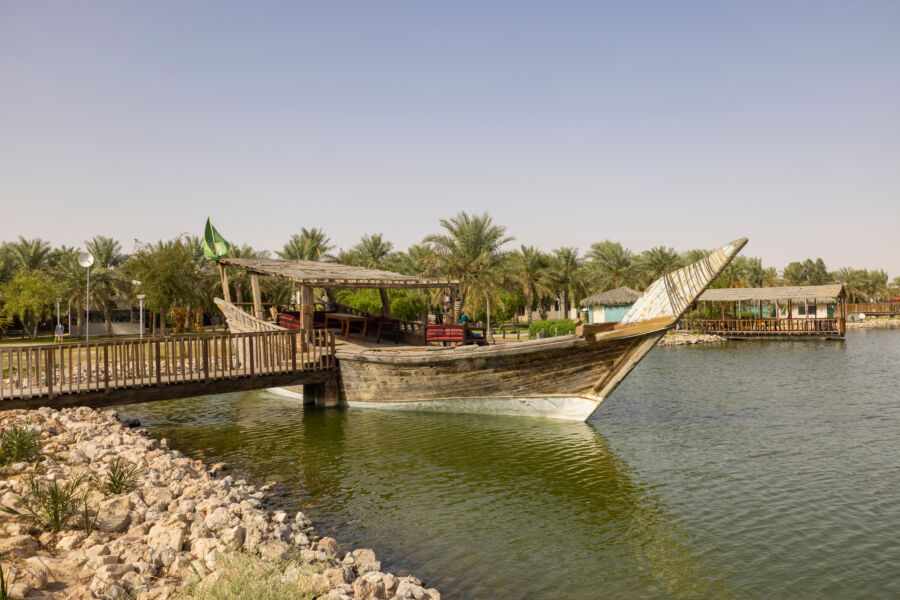
Al Ahsa Oasis, recognized by UNESCO as the world’s largest self-contained oasis, contrasts Saudi Arabia’s predominantly desert landscape. This verdant wonder encompasses over 2.5 million date palms nourished by 280+ natural springs, creating a microclimate that has supported human settlement for over 5,000 years.
Walking among these ancient palms feels like discovering a secret world where the harsh desert gives way to cool shade and the sound of flowing water. The oasis has witnessed the rise and fall of numerous civilizations, each leaving distinct cultural and architectural imprints that create a living museum of human adaptation.
Strategic timing: The date harvest season (September-October) offers a fascinating glimpse into traditional agricultural practices and the opportunity to sample dozens of date varieties directly from the source. Morning visits between 7-10 AM provide the most pleasant temperatures and the best natural lighting for photography as sunlight filters through the palm fronds.
Don’t miss: The Jabal Al Qarah cave system features naturally air-conditioned chambers formed through thousands of years of erosion – a refreshing escape on hot days. The newly restored Ibrahim Palace complex showcases Ottoman-era architecture and houses an excellent regional history museum. For 2025, the immersive “Date Journey” experience will allow visitors to follow the complete cultivation process with hands-on activities guided by local farmers.
Optimization tip: While most tour packages focus exclusively on the eastern section of the oasis, arrange for a local guide (approximately 150 SAR/$40 for a half-day) to explore the less-visited western springs and traditional farming villages where agricultural practices remained virtually unchanged for centuries. Local guides can often arrange home visits with farming families who offer traditional meals using ingredients harvested that day – an authentic experience no restaurant can match.
7. Asir National Park: Saudi Arabia’s Green Mountains
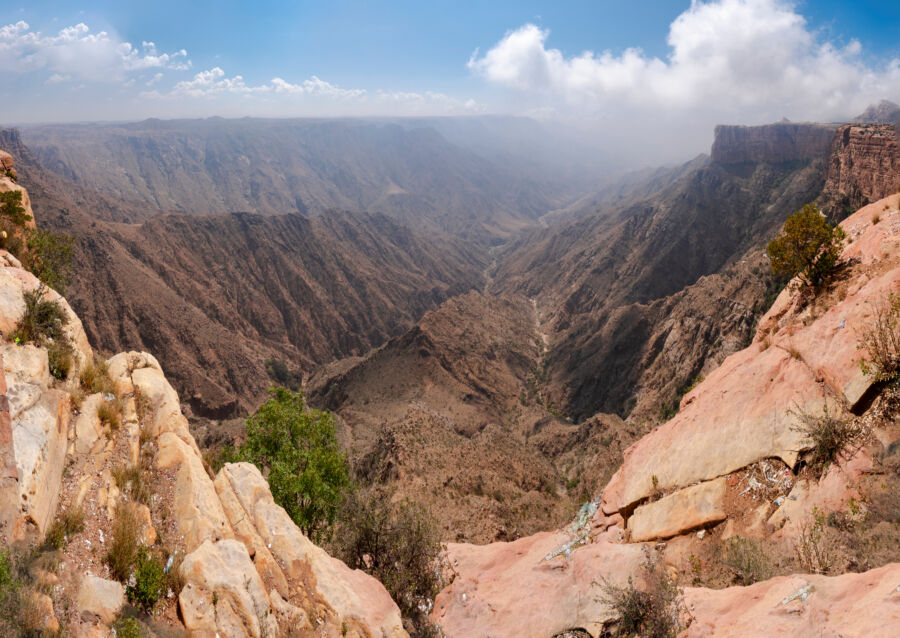
The Asir region in Saudi Arabia’s southwest corner defies expectations with its verdant mountains, mist-shrouded valleys, and pleasant year-round climate. Asir National Park, covering over 1,600 square kilometers, showcases dramatic landscapes resembling East Africa more closely than the Arabian Peninsula.
What makes Asir extraordinary is its biodiversity. The park harbors over 300 plant species, many found nowhere else in Saudi Arabia, alongside diverse wildlife, including baboons, gazelles, and numerous bird species. Add the region’s distinctive culture and architecture, and you have a destination that satisfies nature lovers and cultural explorers.
Strategic timing: During the summer months (June-August), Asir becomes especially popular with Saudi tourists escaping the extreme heat of other regions. For foreign visitors, April-May offers the perfect combination of pleasant temperatures, lush greenery following winter rains, and significantly fewer domestic tourists – allowing for more authentic local interactions.
Don’t miss: The Cable Car in Al Soudah (the highest point in Saudi Arabia at nearly 3,000 meters) offers spectacular views across the mountains. The new “Green Arabia” visitors center, opening in mid-2025, will feature interactive exhibits on the region’s unique ecosystem and conservation efforts. For cultural experiences, visit the traditional Rijal Almaa and Habala villages, which have a distinctive stone architecture that seems to grow organically from the mountainsides.
Optimization tip: Most visitors base themselves in Abha, but staying in the smaller town of Al Soudah provides direct access to the park’s most scenic areas while offering accommodation costs approximately 30% lower than in the main city. Local hiking guides (around 200 SAR/$53 per day) know hidden trails that tour groups miss, including secluded waterfalls and optimal wildlife viewing spots that won’t appear in standard guidebooks.
8. Red Sea Project: The Future of Luxury Eco-Tourism
The Red Sea Project represents Saudi Arabia’s ambitious vision for sustainable luxury tourism. This massive development along the western coast is designed to transform 28,000 square kilometers of pristine coastline into an exclusive destination while maintaining strict environmental protection standards – creating a new model for responsible tourism development.
The first phase, opening in 2025, will include 16 hotels across five islands and two inland sites, offering unprecedented access to one of the world’s most pristine marine environments. The project operates on 100% renewable energy and aims to achieve a 30% net conservation benefit to the ecosystem by 2040 – luxury with a conscience.
Strategic timing: Plan your visit for October-November or March-April when temperatures are ideal for marine and desert activities. During these shoulder seasons, you’ll also find introductory rates at newly opened properties, with potential savings of 25-40% compared to peak winter prices as properties seek to build their reputation and clientele.
Don’t miss: The newly opened Coral Bloom resort, designed by renowned architect Foster + Partners, features buildings inspired by the region’s natural coral formations that seem to emerge organically from the landscape. The Red Sea Conservancy offers guided snorkeling tours led by marine biologists to explore pristine reefs harboring over 300 coral species and thousands of fish species. Adventure enthusiasts should explore the Desert Rock resort, partially carved into a granite mountain with rooms offering panoramic desert and sea views from private infinity pools.
Optimization tip: Book combination packages that include overnight desert camps and coastal stays to experience the full diversity of the region. The Red Sea Explorer Pass (available in 3, 5, or 7-day options) provides access to multiple activities at discounted rates of up to 40% compared to individual bookings. For the ultimate luxury experience, book mid-week stays that include complimentary activities—these often represent better value than weekend-only lower rates that exclude experiences.
9. Taif: The City of Roses
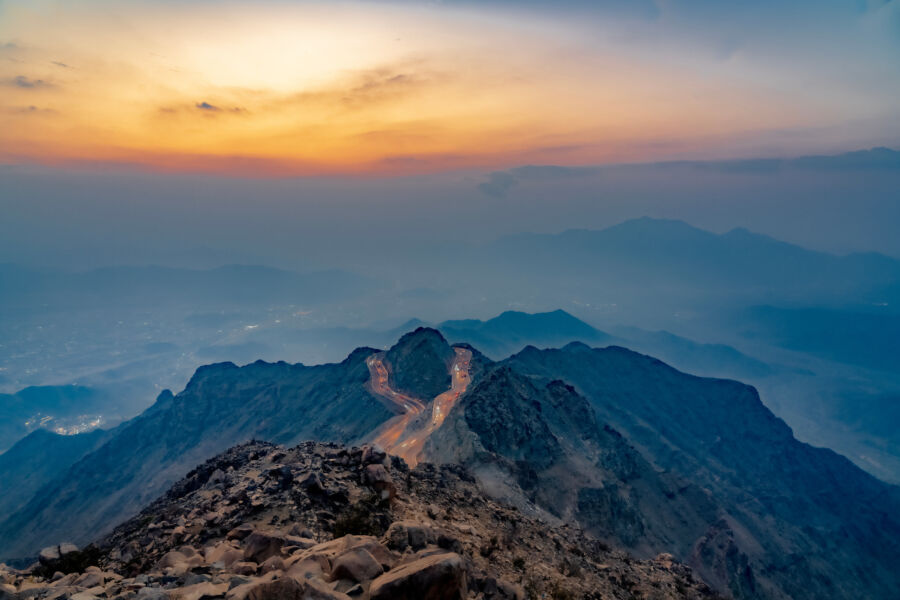
Perched at 1,800 meters in the Sarawat Mountains, Taif offers a refreshing escape from the heat that blankets much of Saudi Arabia. This charming city is renowned for its pleasant climate, lush landscapes, and the famous damask roses cultivated here for centuries – creating a sensory experience unlike anywhere else in the Kingdom.
Each spring, Taif’s rose farms harvest millions of roses used to produce some of the world’s most precious rose oil (attar) and rose water, ingredients highly prized in perfumery and culinary arts. The annual Rose Festival (April-May) transforms the city into a fragrant celebration of this cultural heritage that engages all your senses.
Strategic timing: The Rose Festival (usually mid-April to early May) showcases the height of the rose harvest with special events, demonstrations of traditional distillation methods, and markets selling rose-based products. For those sensitive to crowds, early April provides similar natural beauty with significantly fewer visitors and slightly lower accommodation prices.
Don’t miss: The Al Shafa mountains just outside Taif feature terraced fields bursting with pink roses during the season – a photographer’s dream. The Al Gadhi Palace, now a museum, offers insights into the region’s political history in a beautifully preserved setting. For panoramic views, take the Al Hada Road cable car, which descends 800 meters along the mountain face over a 4-kilometer stretch, offering breathtaking vistas of the surrounding valleys.
Optimization tip: While most visitors focus exclusively on the commercial rose farms, arrange with a local guide to visit family-owned operations in Al Hada and Al Shafa villages, where traditional cultivation and distillation methods remain unchanged for generations. These smaller producers often sell rose products at 30-40% less than city markets, offering more authentic experiences and direct interaction with farming families who have cultivated roses for centuries.
10. Farasan Islands: Saudi Arabia’s Hidden Archipelago

The Farasan Islands archipelago, located in the Red Sea off Saudi Arabia’s southwestern coast, comprises over 170 islands notable for their pristine beaches, diverse marine life, and unique cultural heritage. These protected islands represent one of Saudi Arabia’s most biodiverse regions above and below the water – a paradise for nature lovers seeking unspoiled beauty.
What makes the Farasan Islands exceptional is their unspoiled nature and fascinating historical elements, including Ottoman-era buildings, ancient rock inscriptions, and traditional pearl fishing settlements. The surrounding waters harbor dugongs, dolphins, and numerous coral species in crystalline waters with visibility often exceeding 20 meters.
Strategic timing: Visit between November and April when sea conditions are calmest and underwater visibility is exceptional. For wildlife enthusiasts, the period between July and October offers the chance to witness nesting sea turtles along protected beaches – a rare and moving natural spectacle.
Don’t miss: The Farasan Marine Protected Area features some of the Red Sea’s healthiest coral reefs, accessible via snorkeling and diving trips guided by local conservation experts. On land, explore the abandoned pearl merchant houses in Farasan village with their distinctive limestone architecture and wooden-latticed balconies that tell the story of once-thriving maritime trade. The Farasan Gazelle Reserve protects the endangered Arabian gazelle in its natural habitat, with guided tours available by reservation.
Optimization tip: While day trips from Jizan are popular, staying overnight on Farasan Island allows for early morning wildlife viewing when animals are most active and the light is perfect for photography. The government guesthouse offers basic but comfortable accommodation at approximately 250 SAR ($67) per night and should be booked at least one month in advance through the tourism office in Jizan. Local fishermen can arrange private boat excursions to uninhabited islands for around 350 SAR ($93) per boat – a fraction of organized tour costs if you travel with friends or family.
See Related: How to Plan Your Dream Trip in One Sitting
11. NEOM’s The Line: A Glimpse into the Future
While still under development, portions of Saudi Arabia’s revolutionary NEOM project will begin welcoming visitors in 2025, offering a fascinating preview of what may be the world’s most ambitious urban development project. The Line, a 170km linear city designed to eventually house 9 million people, represents a radical approach to urban planning with its car-free, zero-carbon design.
Visiting NEOM in 2025 provides a rare opportunity to witness a futuristic city rising from the desert. The first completed section will showcase revolutionary concepts, including vertical agriculture, renewable energy systems, and AI-integrated infrastructure that could redefine how humans live in harmony with nature and technology.
Strategic timing: The NEOM Preview Center will open to international visitors in January 2025, with touring packages available starting in March. Book for weekday visits, as weekends typically see high demand from domestic tourists interested in this national mega-project.
Don’t miss: The Trojena Experience Center offers virtual previews of the planned mountain destination that will host the 2029 Asian Winter Games – complete with year-round skiing in a region traditionally known for its desert climate. The Sindalah Island luxury resort, the first completed NEOM tourism component, features world-class dining and recreation facilities focusing on sustainable luxury. Tech enthusiasts should visit the Innovation Hub, which showcases prototypes of technologies being developed specifically for the project, from autonomous transportation to advanced water conservation systems.
Optimization tip: The official NEOM Preview Package (1,250 SAR/$333) includes transportation from Tabuk, guided tours of completed sections, and exclusive access to the project’s planning centers. While expensive, this represents the only authorized way for foreign visitors to access most NEOM sites during this early development phase. To maximize value, book the Thursday package, which includes additional stops and a sunset reception unavailable on other days.
12. Wadi Disah (Valley of the Palms): Saudi’s Hidden Canyon

In the Tabuk region of northwestern Saudi Arabia, Wadi Disah (also called Wadi al-Disah) represents one of the country’s most spectacular natural wonders. This dramatic canyon features soaring sandstone cliffs reaching 500 meters high, through which flows a year-round stream supporting lush palm groves and diverse vegetation.
The contrast between the red-orange canyon walls and the emerald green palms creates breathtaking scenes that rival more famous canyon systems worldwide. As you hike through this geological marvel, you’ll experience a perfect harmony of dramatic landscapes and serene oases supporting human life for millennia.
Strategic timing: Visit between October and April when temperatures are pleasant for hiking. Early morning visits (7-10 AM) provide optimal natural lighting for photography as the rising sun illuminates the canyon walls with a golden glow that makes the red sandstone appear on fire.
Don’t miss: The newly established hiking trails range from easy one-hour walks to challenging full-day treks exploring the canyon’s hidden side valleys and ancient petroglyphs. The northern entrance features remarkable mushroom-shaped rock formations created through millennia of wind erosion—natural sculptures that seem to defy gravity. For 2025, the new Wadi Disah Visitor Center will offer guided interpretive tours explaining the region’s geological and ecological significance through interactive exhibits.
Optimization tip: Most tour operators visit only the easily accessible southern section. For a more immersive experience, arrange for a 4×4 vehicle with a local guide (approximately 600 SAR/$160 for a full day) to explore the less-visited northern reaches of the canyon where vegetation is lusher and crowds are virtually non-existent. Pack a picnic lunch to enjoy beside natural pools that form along the wadi – an experience that combines natural beauty with peaceful solitude far from typical tourist routes.
13. Al Masmak Fortress: The Birthplace of Modern Saudi Arabia
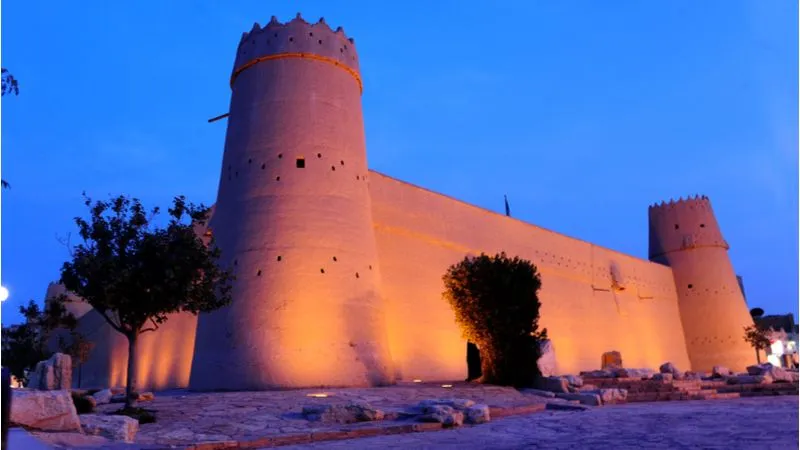
Located in the heart of Riyadh, Al Masmak Fortress embodies Saudi Arabia’s foundation story. This iconic mud-brick fortress witnessed the famous 1902 raid led by Abd al-Aziz Ibn Saud (later King Abdulaziz), who recaptured Riyadh and began the campaign to unify the Kingdom.
Beyond its historical significance, the fortress represents a magnificent example of traditional Najdi architecture with its distinctive mud-brick construction, wooden doors, and palm-trunk roof supports. Today, the fortress houses an excellent museum chronicling the founding of modern Saudi Arabia through artifacts, photographs, and interactive displays.
Strategic timing: Visit on weekday mornings (9-11 AM) to avoid midday heat and the weekend crowds. The fortress is especially atmospheric in the early evening (around 5 PM) when the setting sun casts a golden hue on the mud-brick walls, making them appear to glow from within.
Don’t miss: The fortress’s main gate still bears the damage from a spear thrust during the 1902 raid, a physical connection to this pivotal historical moment. For 2025, the new immersive “Kingdom Beginnings” exhibit uses augmented reality to bring historical figures and events to life as visitors explore the fortress rooms – creating an engaging narrative that connects past struggles with present achievements.
Optimization tip: While the fortress audio guide costs 25 SAR ($6.50), the free “Riyadh History” mobile app provides more comprehensive information, including historical photographs, maps, and first-hand accounts of the famous raid. Download it before your visit and save your audio guide budget for a traditional Saudi coffee at the nearby heritage café – a perfect complement to your historical exploration.
14. Umluj: The “Maldives of Saudi Arabia”

Often called the “Maldives of Saudi Arabia,” Umluj along the northern Red Sea coast features more than 100 islands with powder-white sand beaches and crystal-clear turquoise waters. This emerging destination offers some of the most pristine marine environments in the world, with coral reefs that remain largely unexplored by mass tourism.
What makes Umluj truly special is its undeveloped nature. Unlike more established Red Sea destinations, many islands remain completely uninhabited, offering visitors the rare experience of exploring truly pristine environments. The region’s marine biodiversity includes over a thousand fish species and hundreds of coral varieties – a living aquarium surrounding islands that feel like human development has never touched.
Strategic timing: March-May and September-November offer ideal conditions with calm seas, excellent visibility for snorkeling/diving, and pleasant temperatures. During July-October, visitors might witness nesting sea turtles or hatching events on protected beaches – an unforgettable wildlife experience for nature enthusiasts.
Don’t miss: The “Seven Sisters” island group features some of the region’s most spectacular snorkeling opportunities with vibrant coral gardens just meters from shore. For 2025, the newly launched glass-bottom boat tours provide access to deeper reefs for those who prefer not to snorkel. The coastal desert adjacent to Umluj contains fascinating archaeological sites, including ancient rock art and abandoned pearl fishing settlements, which tell the story of human adaptation to this challenging coastal environment.
Optimization tip: While day trips to nearby islands are readily available (starting at 150 SAR/$40 per person), arrange with local fishermen for early morning departures (around 6 AM) to reach more distant islands before other tour boats arrive. These arrangements typically cost 30-40% more but provide exclusive access to pristine sites during optimal morning conditions. Local fishermen often know secluded spots where you can snorkel with feeding manta rays or dolphins – experiences that organized tours rarely include.
15. Kingdom Centre Tower: Riyadh’s Iconic Skyline Marvel
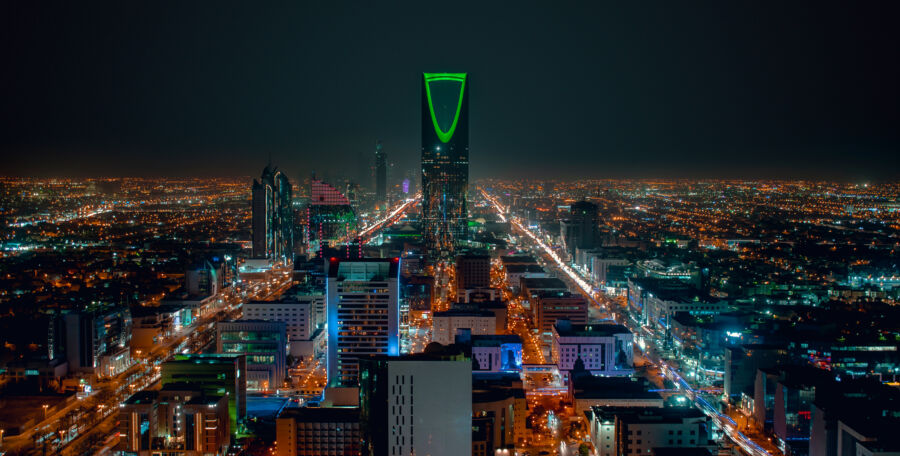
Topping out at 302 meters, the Kingdom Centre Tower represents Riyadh’s most iconic architectural landmark and offers visitors unparalleled views across the sprawling Saudi capital. Its distinctive inverted parabolic arch topped with a sky bridge creates a silhouette recognized worldwide – a symbol of Saudi Arabia’s rapid modernization.
The Kingdom Center’s dual nature makes it exceptional as a functioning commercial center and tourist attraction. The building houses luxury shops, offices, and the Four Seasons Hotel, while its observation deck and sky bridge attract visitors seeking panoramic city views. This blend of function and spectacle makes it a perfect representation of contemporary Saudi culture.
Strategic timing: Visit the observation deck about an hour before sunset to experience daytime and nighttime views as the city transforms from sun-drenched concrete to a sea of lights stretching to the horizon. Tuesday and Wednesday evenings typically see the fewest visitors, allowing for unobstructed photographs and a more peaceful experience.
Don’t miss: The 99th-floor sky bridge spans the building’s distinctive architectural opening, providing 360-degree views from what feels like a floating glass platform suspended in the air. The Kingdom Centre Mall below features ultra-luxury boutiques, and Saudi designer showcases offering unique items unavailable elsewhere. For 2025, the new “Riyadh Past and Future” exhibit uses digital overlays to show the city’s evolution from desert settlement to modern metropolis – a fascinating window into Saudi Arabia’s rapid transformation.
Optimization tip: While general admission to the sky bridge costs 63 SAR ($17), visitors dining at the Spazio Restaurant (one floor below) receive complimentary sky bridge access. The minimum spend at the restaurant (approximately 200 SAR/$53 per person) represents good value considering the fine dining experience plus the included observation deck visit. Request a window table when making your reservation to enjoy the same spectacular views during your meal.
See Related: How to Calculate Trip Cost for Travel Insurance
Saudi Arabia Travel Planning: 2025 Practical Information
Best Time to Visit Saudi Arabia in 2025
Saudi Arabia’s climate varies significantly by region, so timing your visit strategically can dramatically impact your experience:
- October-March: Ideal for most regions with temperatures between 65-85°F (18-29°C)
- June-August: Perfect for the southwestern mountains (Asir region) with pleasant 70-80°F (21-27°C) days
- April-May and September: Good compromise seasons with manageable temperatures and fewer tourists
- Avoid July-August for desert regions where temperatures regularly exceed 105°F (40°C)
Saudi Arabia Visa Information for 2025
Getting into Saudi Arabia has never been easier, with tourist visas available to citizens of 49 countries through a simple online application process:
- eVisa Cost: 535 SAR ($143) including health insurance
- Processing Time: Usually less than 24 hours
- Validity: Multiple entry for one year with stays up to 90 days
- Application Website: visa.visitsaudi.com
Always check the official Saudi tourism website before planning your trip for the latest visa requirements.
Getting Around Saudi Arabia
Saudi Arabia’s transportation infrastructure has improved dramatically in recent years:
- Domestic Flights: The most efficient way to cover long distances between major cities
- High-Speed Rail: The Haramain Railway connects Mecca, Jeddah, and Medina at speeds up to 300 km/h
- Car Rental: Essential for exploring natural sites, best booked in advance through international agencies
- Ride-Sharing: Uber and Careem operate in major cities with user-friendly English interfaces
- Public Transportation: Still limited but expanding in major cities with new metro systems
Money-Saving Tip: The Saudi Airlines Flexi Fare, while 15% more expensive than basic fares, allows unlimited date changes, potentially saving substantial rebooking fees if your plans change. The Discover Saudi pass offers discounted domestic flights for multi-city trips when purchased together.
Cultural Considerations and Etiquette
Saudi Arabia has relaxed many restrictions for tourists, but cultural sensitivity remains important:
- Dress Code: Modest clothing is appreciated (shoulders and knees covered)
- Photography: Seek permission before photographing locals, especially women
- Prayer Times: Some businesses close briefly during prayer times (typically 15-30 minutes)
- Ramadan: If visiting during Ramadan, respect fasting hours in public
- Alcohol: Remains prohibited throughout the country, so prepare for alcohol-free evenings
Safety and Communication
Saudi Arabia is generally very safe for tourists, with low crime rates. For connectivity:
- Purchase a local SIM card upon arrival (approximately 110 SAR/$29 for 20GB)
- Download offline maps before visiting remote areas
- Register with your country’s travel advisory service before your trip
- The tourist police helpline (930) offers assistance in multiple languages
Final Thoughts: Why 2025 is the Perfect Time to Visit Saudi Arabia
Saudi Arabia stands at a fascinating crossroads between preserving its rich cultural heritage and embracing an ambitious vision for the future. 2025 represents a unique window during which travelers can experience this transformation firsthand—ancient sites are now accessible with modern amenities, while futuristic projects are beginning to welcome their first visitors.
By following the strategic approaches outlined in this guide, you’ll experience a side of Saudi Arabia that few international travelers have witnessed—authentic cultural encounters, spectacular natural wonders, and warm hospitality that defies common stereotypes about the Kingdom.
Whether you’re drawn to ancient history, natural landscapes, cultural experiences, or witnessing a society in transformation, Saudi Arabia in 2025 offers a travel experience unlike anywhere else on earth. The question isn’t whether you should visit, but rather which of these 15 extraordinary destinations you’ll explore first.
Have you visited any of these remarkable Saudi Arabian destinations? Are you planning a trip to the Kingdom in 2025? Share your experiences or questions in the comments below!
